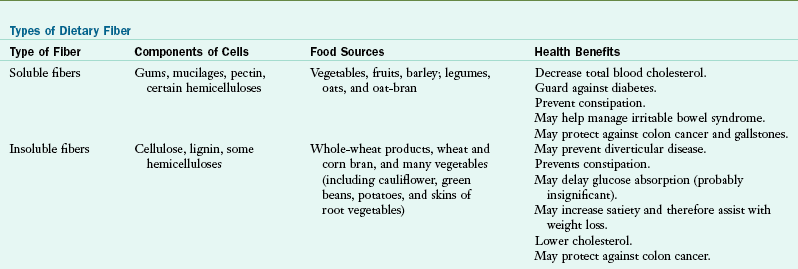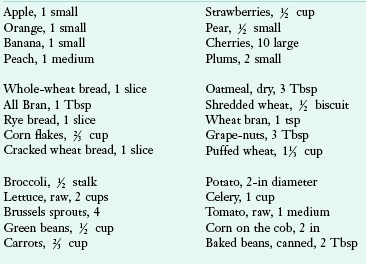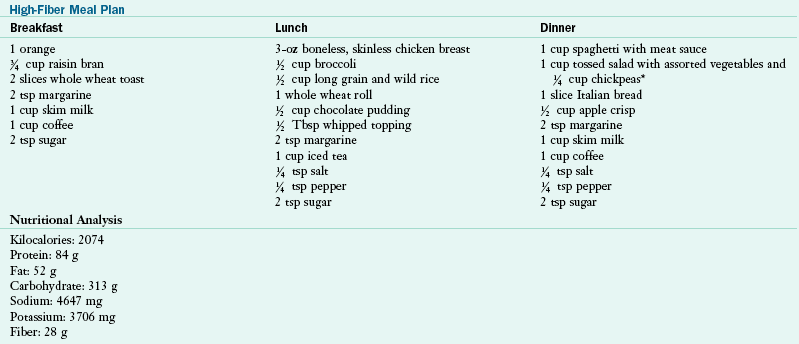Nutritional Facts on a High-Fiber Diet
This diet is a modification of the regular diet. The purpose of this diet is to decrease transit time through the intestine, promote more frequent bowel movements, and softer stools. This diet may be prescribed as a treatment for diverticulosis, irritable bowel syndrome, hemorrhoids, or constipation. It includes all the foods on a regular diet, with emphasis on the proper planning and selection of foods to increase the daily intake of fiber. Fluid intake should be increased. The American Dietetic Association recommends that the average adult have a daily fiber intake of 20 to 35 g from a variety of sources. For children the child’s age plus 5 g of fiber is recommended daily. In cases of severe constipation more fiber is recommended. Because of possible interactions with absorption of nutrients, regular intake of greater than 50 g of fiber per day is not recommended.
Although numerous over-the-counter fiber supplements are available, food sources provide other nutrients and are the preferred method of increasing dietary fiber. Adequate liquid consumption (at least eight 8-oz glasses per day) is recommended. Fiber should be added to the diet slowly because of possible cramps, bloating, and diarrhea with a sudden fiber increase. Maximum therapeutic benefits of fiber are obtained after several months of compliance. There are two components of dietary fiber, each providing health benefits: insoluble and soluble.

Guidelines for High-Fiber Diet
1. Increase consumption of whole-grain breads, cereals, flours, and other whole-grain productions to 6 to 11 servings daily.
2. Increase consumption of vegetables, legumes and fruits, nuts, and edible seeds to 5 to 8 servings daily.
3. Consume high-fiber cereals, granolas, and legumes as needed to bring fiber intake to 25 g or more daily.
4. Increase consumption of fluids to at least 2 L (or approximately 2 qt) daily.
5. For a high-fiber diet of approximately 24 g of dietary fiber: use 12 or more servings of the foods from the groups below (each food contains approximately 2 g of dietary fiber). For example,  cup of baked beans (8 Tbsp) would count as 4 servings.
cup of baked beans (8 Tbsp) would count as 4 servings.
Each of these foods in this amount contains 2 g of dietary fiber:

*Daily values (DVs) are reference numbers based on the recommended dietary allowance. They were developed to help consumers determine if a food contains a lot or a little of a specific nutrient. The DV for fiber is 25 g. The percent DV (%DV) listed on the Nutrition Facts panel of food labels states the percentage of the DV provided in 1 serving. %DVs are based on a 2000-calorie diet.
Food Sources of Dietary Fiber ranked by grams of dietary fiber per standard amount. (All are ≥10% of adequate intake for adult women, which is 25 g/day.)

*Fiber content may be higher, depending on vegetables selected for salad.
